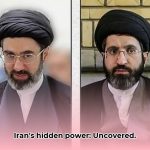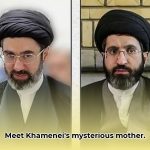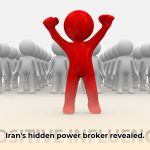Ever wonder what the life of Iran’s Supreme Leader, Ayatollah Ali Khamenei, is really like behind closed doors? We see him on television making high-stakes decisions, but what about his family’s role in Iran’s political landscape? It’s a world shrouded in mystery and complex dynamics. This article explores what we do know – and what we can only speculate on – about Khamenei’s family. We examine their potential impact on Iranian politics, the country’s future, and succession planning. We’ll scrutinize the individuals closest to him, piecing together a clearer picture of how his personal life intertwines with his powerful position. For more on his marriage, see Khamenei’s marriage.
Ali Khamenei Family Life: Exploring Iran’s Leadership Dynamics
Ayatollah Ali Khamenei, Iran’s Supreme Leader, wields immense power, both directly and indirectly. His public life—his speeches, fatwas, and pronouncements on religious and social values—is well-documented. However, his family life remains a carefully guarded secret, sparking questions, speculation, and concerns about transparency within the Iranian government. What explains the intense secrecy surrounding the Supreme Leader’s private sphere?
The image Khamenei projects is one of devout piety, tradition, and staunch family values. He frequently emphasizes the importance of family unity and adherence to religious principles. Yet, concrete details about his immediate family are scarce, leading to endless speculation. We know he is married and has children, but beyond that, specific information blurs. Who are they? What roles, if any, do they play in Iranian politics, business, or cultural affairs? What are their qualifications? These unanswered questions only add to the intrigue surrounding the Leader. Is this deliberate control over the narrative?
One particular name persistently surfaces in discussions about the inner workings of the Iranian regime: Mojtaba Khamenei, his son. Mojtaba is a shadowy figure, and rumors abound regarding his potential political power and influence. Some believe he wields considerable behind-the-scenes influence, acting as a key advisor to his father and shaping Iran’s future trajectory. Others dismiss these claims as speculative and politically motivated, designed to undermine the Supreme Leader’s authority. The reality likely lies somewhere in between these two extremes. His close relationship with his father, combined with the generally secretive nature of his activities, fuels conjecture about succession plans and the possibility of familial political influence. Is there a tacit plan for a dynastic succession?
The intense secrecy surrounding Khamenei’s family life reflects broader power dynamics within Iran’s political structure. In authoritarian regimes, information is power; controlling information is arguably even more potent. By keeping his private life tightly guarded, Khamenei maintains an air of mystique and reinforces his authority. The lack of verifiable facts allows for multiple interpretations, each fueling its own narrative and potentially impacting public opinion. This lack of transparency arguably strengthens the regime’s control and reinforces its authority.
Consider this: public knowledge of sensitive details pertaining to the Supreme Leader’s family could potentially undermine his carefully cultivated image and authority. This opacity serves as a formidable tool and may contribute to perceived political stability, at least in the short term. It allows the government to control the flow of information, ensuring it remains firmly in the hands of those in power. This opacity might serve as a deliberate strategy for maintaining his image as a powerful, untouchable figure, shielded from public scrutiny. This approach mirrors carefully crafted personas seen elsewhere in international relations and political strategy.
Numerous key questions surround Ali Khamenei’s family. How do family members interact with one another, and with those outside the family circle? What specific roles do his children and grandchildren play within Iranian society? How influential is Mojtaba in reality? Are we witnessing preparations for a dynastic transfer of power, even if unofficial? These questions hold the key to understanding Iran’s likely future path. The unseen relationships and power dynamics within the Khamenei family could profoundly impact Iran’s future trajectory.
Because reliable information is limited, speculation is inevitable. Intelligent speculation, informed by a strong understanding of Iranian politics and awareness of similar family power dynamics globally, can offer valuable preliminary insights. It presents a challenge, but one we must undertake, remembering the considerable limitations and potential biases imposed by the lack of reliable information. Ongoing research and analysis of available data may further clarify the picture, but the fundamental veil of secrecy largely remains in place. The picture is, and will likely continue to be, incomplete, perhaps deliberately so. Piecing together the puzzle, however imperfectly, is a crucial exercise for understanding the underlying dynamics of Iranian power.
How to Analyze Ayatollah Khamenei’s Influence on Iranian Economic Policy: Identifying Key Factors
- Khamenei’s influence is exerted indirectly but is nonetheless highly significant. This influence is often exerted through his pervasive control over key institutions and strategic appointments. This ultimately impacts economic stability and shapes critical policy decisions.
- Analyzing Khamenei’s influence requires careful examination of his public pronouncements, the actions of appointed officials across the government and within key economic sectors, and a broad understanding of the overall economic trajectory of Iran under his long-term leadership.
- Understanding the complex interplay between religious ideology and pragmatic economic decisions is also crucial for effective analysis. This understanding offers critical insights into resource allocation, economic priorities, and long-term strategies for national development.
The Supreme Leader’s Shadow: Examining Indirect Control and Economic Stability
How does a religious leader shape a country’s economy through the exercise of soft power and influential relationships? Ayatollah Khamenei’s power operates largely through influence and persuasion, rather than through direct, blatant control. He personally appoints key figures to pivotal economic positions, such as the head of the Central Bank, ministers of economy and industry, and directors of major state-owned enterprises. These individuals, consciously or unconsciously, are often influenced by Khamenei’s ideology, priorities, and overall strategic vision. Given that roughly 99.5% of the Iranian population is Muslim, with the overwhelming majority adhering to Shia Islam, religious considerations are deeply embedded in the nation’s governance and economic activities (as reported by the CIA World Factbook).
Deciphering the Pronouncements: Analyzing Economic Guidelines and Their Impact
Khamenei’s public statements on economic matters offer valuable clues for those seeking to understand the direction of Iran’s economy. These declarations are not merely rhetorical pronouncements; they are practical guidelines for policymakers and economic actors. Careful scrutiny of these pronouncements reveals his underlying economic philosophy and priorities. Does he favor self-sufficiency and import substitution, or does he advocate for greater global economic integration? His words offer crucial insights into the nation’s economic future.
Following the Money: Examining Major Economic Indicators and Financial Health
Analyzing economic trends is critical for unraveling Iran’s complex and often opaque financial situation. Measuring key indicators, such as inflation rates, unemployment levels, GDP growth, trade balances, and foreign debt obligations, provides a tangible measure of the effectiveness (or lack thereof) of his policies. What are Iran’s major economic indicators under his leadership, and what are the consequences for the average Iranian citizen?
The Human Element: Understanding the Power Structure and Relationships
Understanding the key players within the Iranian economic system provides a more complete and nuanced picture. Who are the individuals appointed to key economic positions? What are their professional backgrounds and political allegiances? Are they demonstrably aligned with Khamenei’s broader vision for economic stability and long-term growth? Uncovering these personal connections sheds light on the actual channels of influence and helps observers understand the implementation (or non-implementation) of his economic agenda.
The Challenges of Analysis: Addressing Information Gaps and Addressing Secrecy
Analyzing Khamenei’s economic influence presents significant analytical challenges. Iran’s internal political and economic workings are not always transparent. Access to reliable data, particularly regarding internal economic decision-making processes, is often limited or nonexistent. This opacity makes accurate assessments far more difficult. As a result, researchers and analysts are often left piecing together fragmented evidence gleaned from various sources, including official government statements, leaked documents, and anecdotal reports.
Putting it All Together: Taking a Holistic Approach and Understanding the Data
To accurately assess Khamenei’s actual economic influence, a comprehensive approach is required. Analysts must carefully consider his public pronouncements, diligently analyze the actions of appointed officials, rigorously examine prevailing economic trends, and comprehensively understand the intricacies of the Iranian power structure. Ultimately, analyzing Ayatollah Khamenei’s influence on Iranian economic policy requires a multi-faceted approach, recognizing both the overt and covert ways in which his leadership shapes the nation’s financial landscape.
Khamenei’s Influence on Iranian Military Doctrine and Strategic Partnerships: Regional Impacts
- Khamenei’s ideology significantly shapes Iran’s military strategy, blending elements of defensive realism with revolutionary fervor and creating a nationalistic defense posture that emphasizes self-reliance.
- His influence extends to strategic partnerships, often prioritizing regional security cooperation and countering perceived threats through alliances with non-state actors, thereby shaping international relations and regional stability.
- Internal power dynamics within Iran, combined with the persistent effects of international sanctions, impact the full implementation and overall effectiveness of Khamenei’s military and foreign policy strategies, limiting Iran’s overall military capabilities and geopolitical reach.
The pervasive veil surrounding Ali Khamenei’s family life is rivaled only by the intense secrecy surrounding Iran’s nuclear program. How much does this intensely private family life influence his public persona and, crucially, Khamenei’s Influence on Iranian Military Doctrine and Strategic Partnerships?
The Family’s Shadowy Role: Potential Influence on Military Decisions
Little concrete











